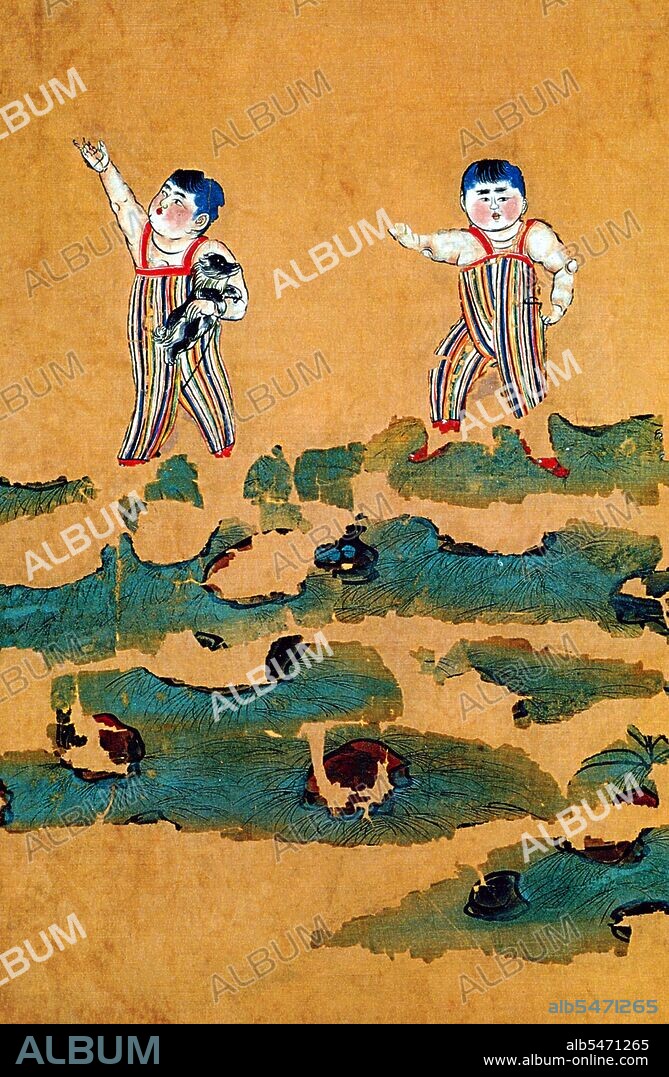alb5471265
China: Painting of two young children playing with a small dog, Turpan Oasis c.7th-8th century, Astana Tombs, Xinjiang

|
Añadir a otro lightbox |
|
Añadir a otro lightbox |



¿Ya tienes cuenta? Iniciar sesión
¿No tienes cuenta? Regístrate
Compra esta imagen

Título:
China: Painting of two young children playing with a small dog, Turpan Oasis c.7th-8th century, Astana Tombs, Xinjiang
Descripción:
Ver traducción automática
The Astana Graves (Chinese: ??????, Pinyin: Asitanà Gumù) are a series of underground tombs located 6km from the ancient city of Gaochang, and 42km from Turpan, in Xinjiang, China. The tombs were used by the inhabitants of Gaochang, both commoners and locals, for about 600 years from 200 CE – 800 CE. The complex covers 10 square kilometres and contains over 1,000 tombs. Different plots for separate castes and families are marked by gravel dividers. Due to the arid environment many important artifacts have been well preserved at the tombs, including natural mummies. A typical tomb is entered by a 10 metre sloping staircase. The tombs are not very large, usually only 2 metres high. Some tombs also have murals inside. The deceased were laid on a small raised platform in the back of the tomb, surrounded by possessions and even food. Their faces were covered by cloths, some of which have distinct Persian motifs. A small funeral brick was placed to next to each body, on which was written the person’s name and other biographical information. These bricks have been incredibly useful for historians to date the tombs’ finds. There are also various Tang Dynasty figurines and silk paintings in graves.
Crédito:
Album / Pictures From History/Universal Images Group
Autorizaciones:
Modelo: No - Propiedad: No
¿Preguntas relacionadas con los derechos?
¿Preguntas relacionadas con los derechos?
Tamaño imagen:
3331 x 5100 px | 48.6 MB
Tamaño impresión:
28.2 x 43.2 cm | 11.1 x 17.0 in (300 dpi)
Palabras clave:
ANIMAL DOMESTICO • ART • ARTE • ARTES • ASIA • ASIATICO • BASTON • CHICOS • CHINA • CHINO • COLMILLOS • COMERCIO • DINASTIA TANG • DIVERSION • ENTRETENIMIENTO • ESTILO • HISTORIA • HISTORICO • INDUMENTARIA • INDUMENTARIAS • JOVEN • JUVENTUD • MAQUILLAJE • MASCOTA • MODA • MUCHACHA • MÚSICA • NINO • NIÑO • PERRO FALDERO • PERRO • PINTURA • PORCELANA • ROPA • RUTA DE LA SEDA • SABOR FUERTE
 Pinterest
Pinterest Twitter
Twitter Facebook
Facebook Copiar enlace
Copiar enlace Email
Email
